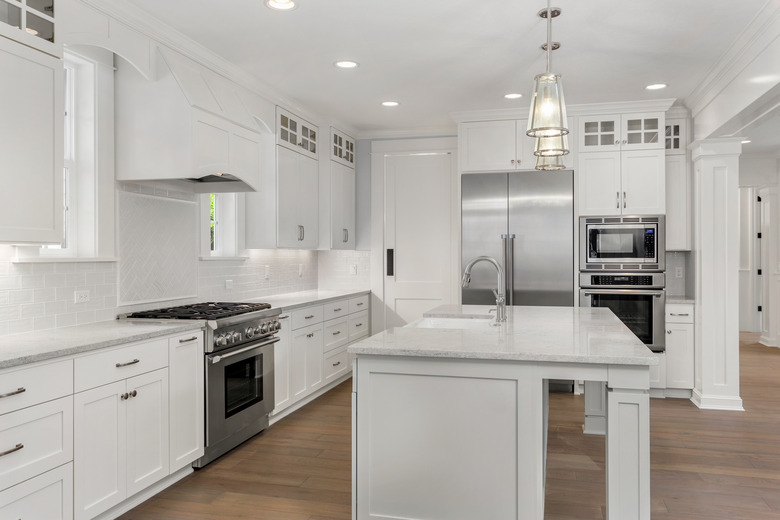Should You Put A Refrigerator On A Floating Floor?
Floating floors are easy to install because they don't require any smelly, messy and time-sensitive adhesive to be applied to the floor first. But this DIY-friendly flooring solution may not be the best choice for your kitchen due to the way it lifts up or bubbles when heavy weight is applied. Before you put a refrigerator on a floating floor, understand the potential risks.
Tip
You technically can put a refrigerator on a floating floor but be aware of how the weight of this appliance will affect the performance of the rest of the floor before installation.
What Are Floating Floors?
What Are Floating Floors?
Floating floors can come in many different materials, including wood, laminate, vinyl, linoleum and even carpet. The term "floating" refers to the fact that no adhesive is used to secure the flooring material to the subfloor, although double-sided tape is sometimes used under the floor to help seams stay put. This makes a floating floor much easier to install and remove than a non-floating floor, but it also allows the floor to expand, move, shift and bubble in certain circumstances.
Floating floors lay flat thanks to their weight (if laid in a single sheet) or tight puzzle-like connections, according to Flooring America. Baseboards and quarter rounds installed where the floor meets the wall can also help prevent the edges from curling up.
Floating Floors Disadvantages
Floating Floors Disadvantages
The major disadvantage of installing floating floors in kitchens is that the weight of the appliances can prevent the proper (and completely normal) expansion and shifting of the floor. This can cause the floor to warp or to "bubble," creating an unsightly lump in the floor at best and a trip hazard at worst. The weight of the refrigerator can have a see-saw effect on a floating floor, causing the far end to rise due to the pressure exerted on the end under the refrigerator.
Plus, any time you need to move a heavy appliance like a refrigerator for maintenance or replacement, you run the risk of moving or tearing the floor or disrupting the joints along the way.
Placing Refrigerator on Floating Floor
Placing Refrigerator on Floating Floor
Putting a refrigerator on a floating floor is a little risky but not impossible. As much as possible, ensure that the floor does not come in direct contact with the walls or cabinets in the kitchen so that it has plenty of room to shift in any direction without creating problematic lumps.
Take great care when moving a refrigerator across a floating floor. Use a furniture dolly to roll the weight of the refrigerator up and off the floor instead of dragging it, which will cause a seam or lump to appear in front of the refrigerator. However, moving a refrigerator with a furniture dolly also requires special care, since manufacturers like GE recommend fridges be kept upright as much as possible due to the potential for oil to drain into the coolant if they're tipped onto their sides.
When installing wooden or laminate floating floors in a kitchen, place small planks under a refrigerator running from side to side and allow longer planks to be featured in the main portion of the kitchen. This will prevent the weight of the refrigerator from popping the planks up in the middle of the kitchen where you walk.
